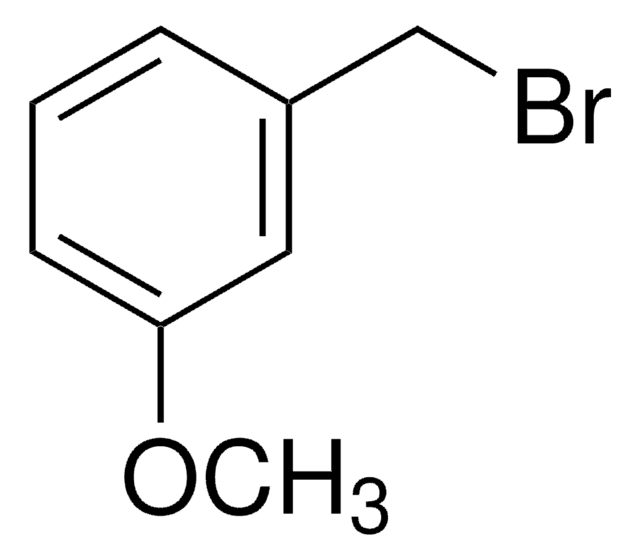427691
3-Iodobenzyl bromide
95%
Synonyme(s) :
α-Bromo-m-iodotoluene, 1-(Bromomethyl)-3-iodobenzene, 3-(Bromomethyl)iodobenzene, m-Iodobenzylbromide
About This Item
Produits recommandés
Niveau de qualité
Pureté
95%
Pf
46-51 °C (lit.)
Groupe fonctionnel
bromo
iodo
Chaîne SMILES
BrCc1cccc(I)c1
InChI
1S/C7H6BrI/c8-5-6-2-1-3-7(9)4-6/h1-4H,5H2
Clé InChI
BACZSVQZBSCWIG-UHFFFAOYSA-N
Catégories apparentées
Description générale
Application
It may be used in the synthesis of the following:
- meta-substituted phenylalanine derivatives
- N6-substituted aristeromycin derivative
- (N)-methanocarba-N6-(3-iodobenzyl)adenosine
Mention d'avertissement
Danger
Mentions de danger
Classification des risques
Eye Dam. 1 - Skin Corr. 1B
Code de la classe de stockage
8A - Combustible corrosive hazardous materials
Classe de danger pour l'eau (WGK)
WGK 3
Point d'éclair (°F)
235.4 °F - closed cup
Point d'éclair (°C)
113 °C - closed cup
Équipement de protection individuelle
Eyeshields, Faceshields, Gloves, type P3 (EN 143) respirator cartridges
Faites votre choix parmi les versions les plus récentes :
Déjà en possession de ce produit ?
Retrouvez la documentation relative aux produits que vous avez récemment achetés dans la Bibliothèque de documents.
Notre équipe de scientifiques dispose d'une expérience dans tous les secteurs de la recherche, notamment en sciences de la vie, science des matériaux, synthèse chimique, chromatographie, analyse et dans de nombreux autres domaines..
Contacter notre Service technique
